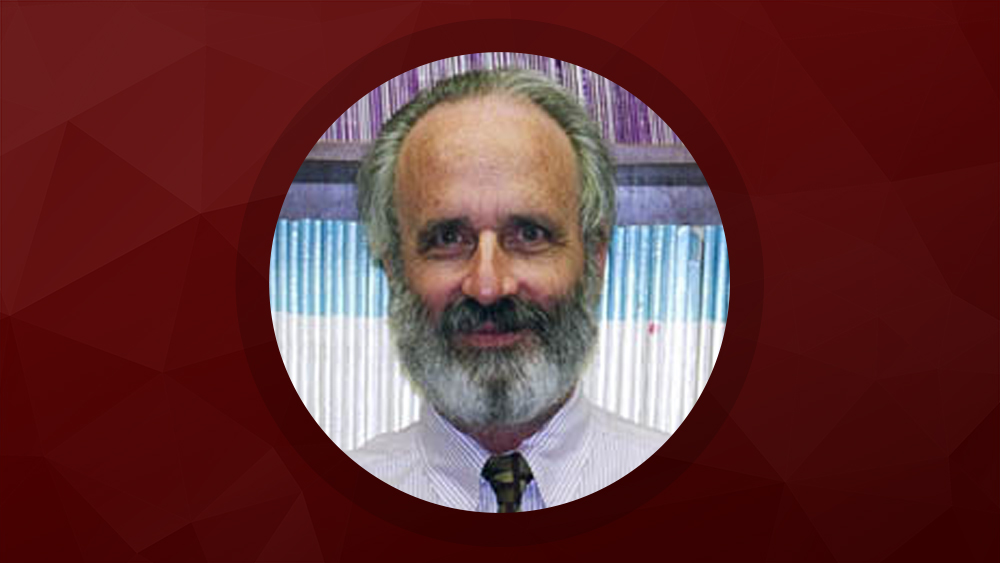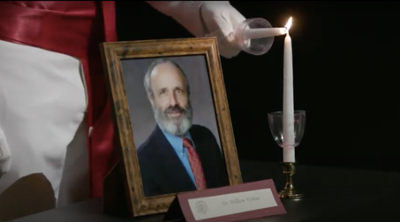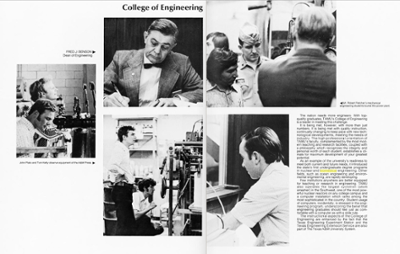
Dr. William “Bill” Hyman was known to students and colleagues as a soft-spoken, but intensely thought-provoking teacher and mentor. During a career that reached into five different decades, he served the Department of Biomedical Engineering at Texas A&M University in various roles, from new professor to academic program director to interim department head. Through his consistent commitment to excellence, he influenced nearly every student and gave back to the department in many important ways. After his death on July 31, 2019, his legacy continues to live on.
Hyman was born on December 13, 1945, and grew up in the Bronx. He earned his bachelor of science degree in mechanical engineering from The Cooper Union, and his master of science and doctor of science degrees from Columbia University. He moved to Texas with his family in 1972 to join the new bioengineering program at Texas A&M, where he would spend almost 40 years until his retirement in 2011.

Hyman was recently called as a former faculty member during the 2020 Aggie Muster Ceremony.
His research focused on medical devices, addressing issues concerning design, U.S. Food and Drug Administration (FDA) regulations, clinical engineering and the interaction of system safety and human factors. This was a unique research direction within bioengineering, which was a new subfield of engineering at the time.
Amitabha Rakshit was Hyman’s first doctoral student at Texas A&M, when Hyman was himself a new professor in the program. In 1973, Rakshit started at Texas A&M in the newly-formed bioengineering program, which at the time was housed in the Department of Industrial Systems until becoming a separate department in 2002.
Rakshit’s first impression of Hyman was in the classroom during a biomaterials course he was teaching.
“In my entire life I haven’t had another professor who was as well organized in his notes,” Rakshit said. “He would put things up on the board in a logical manner, and it was a pleasure to follow his line of thinking.”
The age difference between the two was small, as Hyman had just finished his doctoral degree and Rakshit was beginning his. Rakshit approached him and said Hyman was happy to act as his advisor.
“As a guide, he was excellent, and toward the end of my time at Texas A&M, he had become a good friend,” Rakshit said.
Dr. Saurabh Biswas, now associate professor of practice in the department, also attended Hyman’s classes as a graduate student. He recalled that Hyman was practical in the classroom and used many real-world examples when he taught, including world events and case studies from the FDA.
“Those examples made his classes much more interesting, versus sitting through material that otherwise could be considered boring,” Biswas recalled.
That practical teaching style and inclusion of recent events as case examples made his courses popular because students could immediately see the relevance of the concepts.
Some of Hyman’s accolades included:
- University Teaching Excellence Award: Texas A&M University (2009, 2010)
- Lifetime Achievement Award, American College of Clinical Engineering (2009)
- Meritorious Service Award, ASTM International (2005)
- Charles C. Crawford Service Award, Texas A&M Engineering College of Engineering (2005)
- Fellow, Biomedical Engineering Society (2005)

Hyman contributed to the foundation for current success in several important ways. He was instrumental in preparing the program to be the first in the region to obtain ABET accreditation, which provides assurance that a college program meets the quality standards of the profession. He then became the interim department head when the department first became independent in 2002. He was instrumental in making the proposals to form the new department and also in making the shift from “bioengineering” program – which was broader in scope – to the Department of Biomedical Engineering, which now had a more clear emphasis on medical and clinical applications.
Dr. Brandis Keller, currently an instructional assistant professor in the department, first met Hyman when she transferred to Texas A&M in College Station from Texas A&M at Galveston during her undergraduate studies. He was department head by then, and when Keller continued her education at Texas A&M for her master’s degree, Hyman also became her advisor.
“Scholarship stands on the shoulders of giants, and he truly was someone who provided wisdom and inspired you to not only think about the field but also to have fun while questioning the more open-ended conversation topics swirling around contemporary topics of biomedical engineering,” Keller said.
Hyman’s engagement with students did not end when they graduated. Rakshit ended up in Colorado after graduation and worked as an entrepreneur with several startup companies. The professional relationship that had started between the two continued to grow, and Hyman became a consultant for some of Rakshit’s company projects.
“In my career, he influenced me in more ways than I expected. I maintained his way of being very organized about writing or presenting,” Rakshit said. “You don’t find that in a textbook. I was able to emulate how he presented and some of things he talked about.”
Along with helping former students, Hyman’s practices and influence on curriculum have lasted well past his retirement. Biswas said he developed a culture of looking at medical device design beyond just technical design, stressing the importance of quality and regulatory practices to be taught as well.
“That was something he was passionate about that. He was a biomechanics person, he was very focused on these issues,” Biswas said. “In our department, the reason that we have these certificates in regulatory and all of this emphasis on quality — I would say he was a primary driver of that.”
People remember Hyman as a genuine, approachable person with an immense sense of humor. Keller said he knew how to take weighty subjects and develop assignments to make them lighter and engaging for students.
“For a bonus activity in the biomaterials course, he allowed one act of creativity that somehow related to biomedical engineering, which turned out examples of art (painting, watercolor, marker), music, poetry and acting,” Keller said. “His warm nature encouraged true expression and he never left anyone out. In fact, prior to his departure from Texas A&M, I met with him and he handed over a piece of the artwork that was from my class which I keep in my office to this day.”
Even after his death, Hyman’s legacy will continue to live on in the department. Through the endowed Dr. William Hyman Scholarship Fund, outstanding current and future biomedical students will receive support in a program that Hyman set up for success.